Internet Content Marketing Strategy: Aligning Context & Intent
When defining a Content Strategy for Internet Marketing you need to align Context with User Intent.
A frequent problem I encounter when analyzing a website’s content marketing strategy is that the marketing team is creating content without fully thinking about Context and Intent.
To understand Content Context in its simplest form, let us take a basic one word search query like “apple.”
This search term can be used in two different contexts. 1) apple – the fruit 2) Apple – the company.
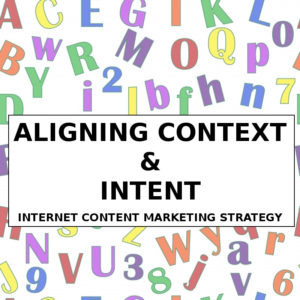 We know that search engines like Google understand Content Context because they have Contextual Advertising Networks like Google AdSense that successfully place fruit advertisements on pages dealing with fruit, and laptop advertisements on pages dealing with computers. It would not be effective to advertise Macintosh Laptop Peripherals on a page with an apple pie recipe. Context is important.
We know that search engines like Google understand Content Context because they have Contextual Advertising Networks like Google AdSense that successfully place fruit advertisements on pages dealing with fruit, and laptop advertisements on pages dealing with computers. It would not be effective to advertise Macintosh Laptop Peripherals on a page with an apple pie recipe. Context is important.
Contextual factors also strongly influence the interpretation of a search query and the results that are returned. Contextual search is a form of optimizing Internet search results based on context provided by the user(User Context). Contextual search attempts to increase the precision of search results based on how valuable they are to individual users. Contextualized search coincides with the increasing popularity of using mobile phones when searching, and a user’s search history. The easiest user context to understand is a user’s current location, and how that impacts search results. Think “Local Search.”
That is User Context. Context also includes Content Context. You can think of Content Context as a component of natural language understanding. Search queries like “movie times” and “movie reviews” can be related to a particular topic “movies”. These can be grouped into what are referred to as Context Clusters. This how search engines like Google can return web pages for a search result even though the exact search term does not appear on the page. They understand the context of what is being searched for.
Content Context Clusters can be explained by going back to the example of searching for the word “apple”. A page with words like apple macbook, apple watch, and apple airpods on it probably is not discussing apple the fruit and is more likely discussing Apple the company, and Apple’s products.
When a search engine like Google offers a user search suggestions as they begin typing a query, one or more context clusters may be presented to the user based on a context cluster probability. The context cluster probability is indicative of a probability that at least one query input that belongs to the context cluster will be selected by the user. A list of queries grouped into the context cluster may be presented as options for a query input selection.
As mentioned earlier, a user’s search history can also effect search context and that takes us into the topic of User Intent.
So far we have discussed Context(both User Context, and Content Context). Next, we need to take a look at Intent.
Search Intent seeks to understand the reason why people conduct a specific search. Why are they searching? Are they searching because they have a question and want an answer to that question? Are they searching for a specific website? Are they searching because they want to buy something or read reviews before buying it?
With the Google Hummingbird and Google RankBrain algorithms, the Google search engine can interpret search intent and display results that meet the user’s search intent.
3 Types Of Search Intent
User Search Intent can be categorized in 3 broad areas.
Informational Intent: To know something. The user wants to answer a specific question. These queries will include “how to”, “what is”, “where is”, and “why do”. Content in this category includes tutorials, and introduction articles.
Navigational Intent: To find something. The user wants to find a specific website or location. Examples of these queries are “closest gas station”, or “facebook.” Google Local Search is a great example of how Google is presenting content based on a user’s search intent.
Transactional Intent: To buy something. The user wants to purchase a product. Most keywords that have high commercial intent will fall into this category. Look for keywords like ‘buy’, ‘online store’, and ‘shipping’.
You could also have a 4th category called Commercial Investigation. This is the intent to research something prior to purchasing it. The user may want to purchase a product in the future, but wants to research the product first by reading product reviews or learn more about how a product works. I still lump this into Transactional Intent for content creation strategies as I view it as part of the Consumer Funnel. As users move closer to the actual act of buying, their searches become more precise(less ambiguous) and are easier to optimize content around. These queries include queries with the words “best”, “review”, “top 10”, etc.
How to Optimize Content for Context and Intent
Knowing a bit about Context and Intent can help guide your Content Marketing Strategies. First, try to plan your content creation to satisfy specific user intentions driving their search queries. Understand related keywords and include them in the content so that search engines can determine the context of the content. If the content is on a narrow subject that could be ambiguous or may be searched for using ambiguous search terms, include a broader background of the subject within the article’s content that will help establish the context of the information and include meaningful related terms or phrases within the content that are less ambiguous.
Building upon the earlier example of “apple”, if you are creating an article on apple – the fruit you would include related terms like orchard, tree, and popular varities of apples like Cortland, Fuji, McIntosh. I realize this is an oversimplified example, but hopefully you get the point. I have found that including related words and terms not only helps with context, but helps with SEO.
Knowing about User Intent can further refine your content by dialing in the content to be about common search patterns like “How To Make Apple Pie”, “Where Is The Nearest Apple Store”, “How To Configure Apple TV”, and “Apple iPhone Review.”
When creating content for a “how to” query, structure the content so the H1 tag contains the query, and then put each step of the process in a H2 tag.
Aligning Content Context and Intent is part science, and part art. With time and practice you will get better at it, and naturally start thinking about content creation and content marketing strategies in a way that is optimized to perform better.

 For the purposes of this article, I want to map out what I feel are the 3 best Cloud Computing providers: Amazon AWS, Google Cloud, and Red Hat.
For the purposes of this article, I want to map out what I feel are the 3 best Cloud Computing providers: Amazon AWS, Google Cloud, and Red Hat.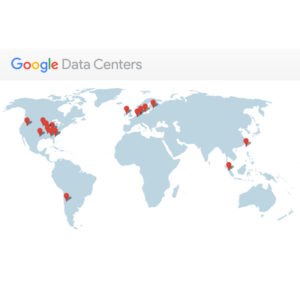 That being said, I think there are some clear leaders in various segments. For Infrastructure as a Service(IaaS) Google and Amazon have the largest most robust global assets and network. Amazon has the most global data centers but I lean toward Google’s data centers and their private global fiber network. Both Amazon and Google are best in class for infrastructure if you are just looking to spin up virtual machines and run servers in the cloud.
That being said, I think there are some clear leaders in various segments. For Infrastructure as a Service(IaaS) Google and Amazon have the largest most robust global assets and network. Amazon has the most global data centers but I lean toward Google’s data centers and their private global fiber network. Both Amazon and Google are best in class for infrastructure if you are just looking to spin up virtual machines and run servers in the cloud. It is widely accepted that a large portion of accounts on Facebook are fake, and our position is that a large potion of advertisement budget spent on Facebook is worthless because it gets consumed by click-fraud farms. But the problem may be bigger than we thought. Following
It is widely accepted that a large portion of accounts on Facebook are fake, and our position is that a large potion of advertisement budget spent on Facebook is worthless because it gets consumed by click-fraud farms. But the problem may be bigger than we thought. Following 
 After a never-ending erosion of online privacy via companies tracking everything users do online, the trend seems to be reversing direction and users are being given the tools they need to take back some control over how their online activities are tracked.
After a never-ending erosion of online privacy via companies tracking everything users do online, the trend seems to be reversing direction and users are being given the tools they need to take back some control over how their online activities are tracked.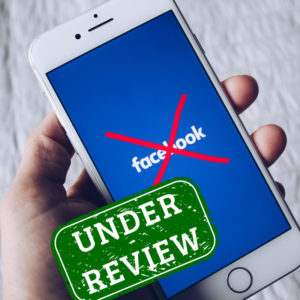 Facebook 2018 Year in Review highlights the top ways people are being exploited on Facebook and its subsidiaries like Instagram. Unsurprisingly, most of them are pretty depressing, confirming what we all already knew from previous years – Facebook can’t be fixed.
Facebook 2018 Year in Review highlights the top ways people are being exploited on Facebook and its subsidiaries like Instagram. Unsurprisingly, most of them are pretty depressing, confirming what we all already knew from previous years – Facebook can’t be fixed.
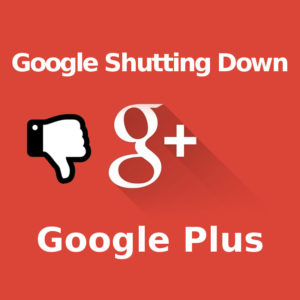 It really is not that much of a blow for Google to shutter Google+. Google admits that Google+ has “low usage and engagement” and that 90 percent of Google+ user sessions last less than five seconds.
It really is not that much of a blow for Google to shutter Google+. Google admits that Google+ has “low usage and engagement” and that 90 percent of Google+ user sessions last less than five seconds.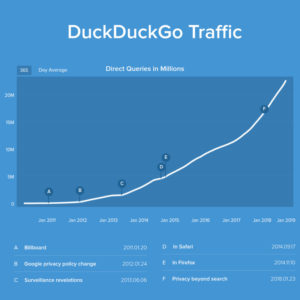 If you are not familiar with the search engine DuckDuckGo yet, you will probably be hearing more about it from now on. DuckDuckGo is a search engine, like Google, Yahoo or Bing, but with DuckDuckGo your searches and your IP address are kept 100% anonymous. People seeking ways to reduce their digital footprint online is driving the rapid traffic growth at DuckDuckGo.com.
If you are not familiar with the search engine DuckDuckGo yet, you will probably be hearing more about it from now on. DuckDuckGo is a search engine, like Google, Yahoo or Bing, but with DuckDuckGo your searches and your IP address are kept 100% anonymous. People seeking ways to reduce their digital footprint online is driving the rapid traffic growth at DuckDuckGo.com. The human brain consists of 100 billion cells called neurons. The neurons are connected together by synapses. If sufficient synaptic inputs to a neuron fire, that neuron will also fire. This process is called “thinking”.
The human brain consists of 100 billion cells called neurons. The neurons are connected together by synapses. If sufficient synaptic inputs to a neuron fire, that neuron will also fire. This process is called “thinking”. Artificial Intelligence and Machine Learning are shaping many of the products and services you interact with every day. In future blog posts I will be discussing how Artificial Intelligence, Machine Learning, Neural Networks, and Predictive Analytics are being used by Marketers to achieve competitive advantage.
Artificial Intelligence and Machine Learning are shaping many of the products and services you interact with every day. In future blog posts I will be discussing how Artificial Intelligence, Machine Learning, Neural Networks, and Predictive Analytics are being used by Marketers to achieve competitive advantage.
Recent Comments